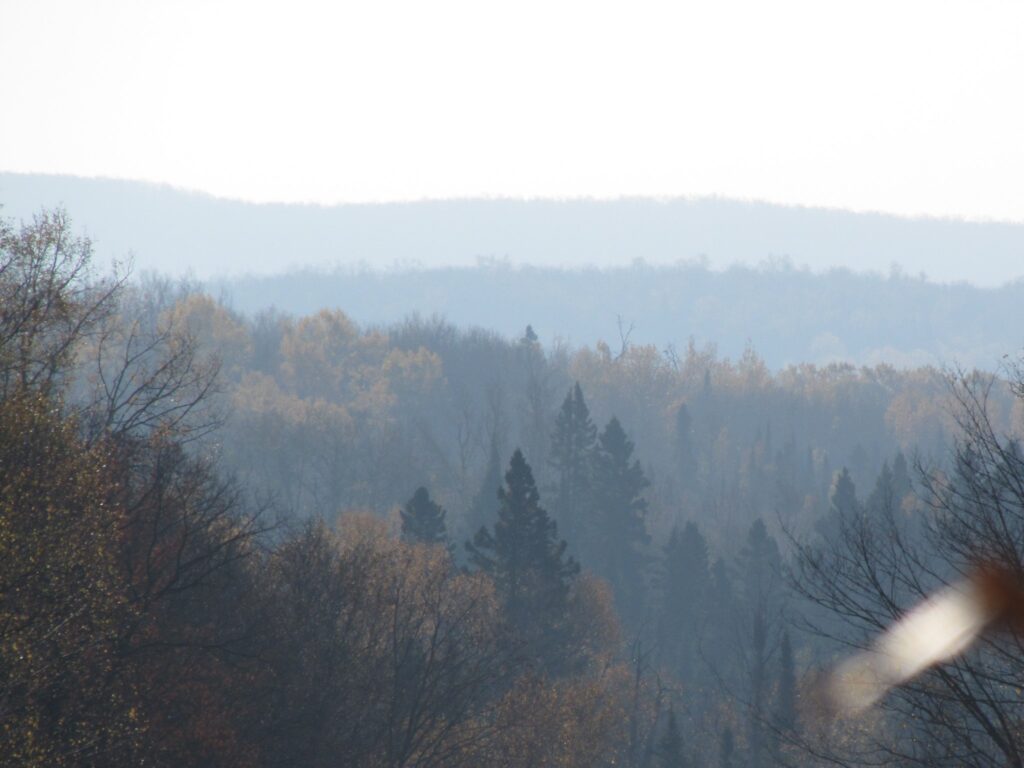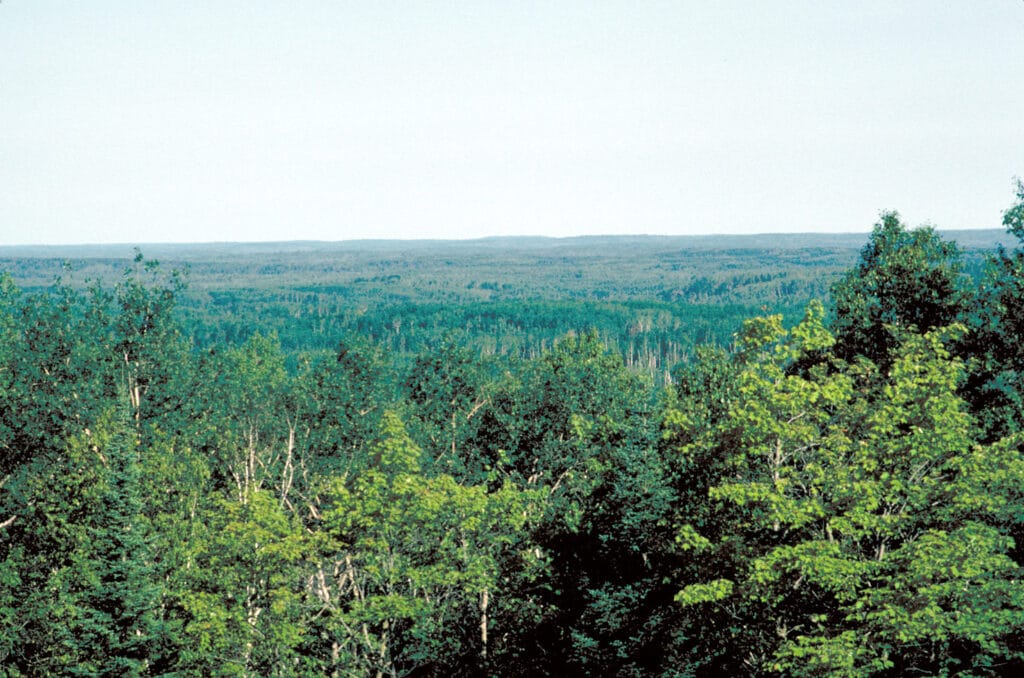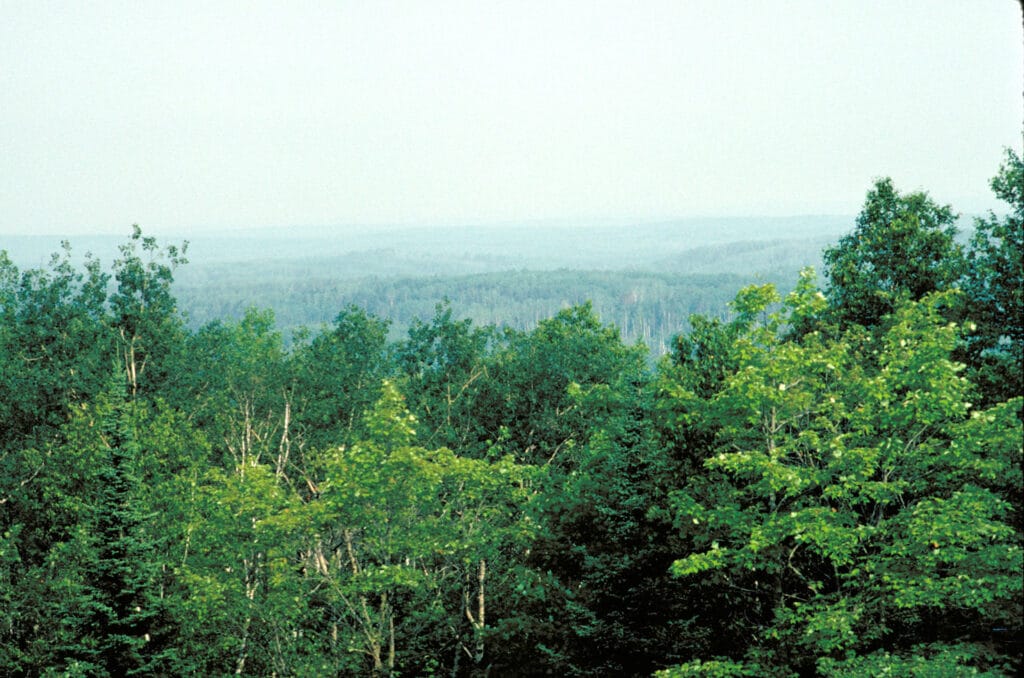
The Boundary Waters Canoe Area Wilderness is known for its clean lakes and rivers. But what about air quality? Hazy skies over the forest may be the result of pollution, and efforts are underway to help.
The Superior National Forest, National Park Service, and other agencies, are required to help keep the air quality clean. National Parks and designated federal wilderness areas are subject to the highest levels of protection for their air. The 1977 Clean Air Act dictates the air quality is to be kept “pristine.”
Unfortunately, air pollution is a notoriously complex issue, and because of the great distances pollution can travel, it’s difficult to deal with.
Some effects of this air pollution are invisible, as the atmosphere can deposit harmful chemicals that disrupt the ecosystem. It can kill wild rice, make fish unhealthy to eat, and more. Some days, the pollution is definitely visible, though, in the form of visible haze in the air.
The state of Minnesota and the federal land managers started working together more than 10 years ago to get a handle on haze. They worked through a complex “Regional Haze Plan,” which had to be approved by the federal Environmental Protection Agency.
The process was long and complicated, and resulted in legal challenges from environmental groups. A major obstacle was deciding on the best way to handle air emissions from taconite processing plants. These large industrial facilities discharge pollutants including nitrogen oxide, particulates, and sulfur.
The EPA rejected some of the state’s plans in 2014. Two years later, the federal agency enacted its own plan for restricting emissions from Minnesota’s haze contributors. Since then, regulators say industrial facilities have cut their emissions enough to meet a goal of reducing emissions by 30 percent from 2002 levels.
As of two years ago, the mining sector represented more than half of all air emissions that affect Minnesota, while electric utilities contributed nearly 30 percent. Paper plants made up the rest. Total combined emissions of nitrogen dioxide and sulfur dioxide were about 41,000 tons in 2018, compared to 96,000 tons in 2002.
Nonetheless, there is still work to do to achieve the Clean Air Act’s ultimate goal: get air quality conditions to their natural state by 2064.
“Based on the most recent measured visibility, Boundary Waters Canoe Area Wilderness is experiencing improvements in regional haze but not at the rate required by the uniform rate of progress required to meet natural background conditions by 2064,” the Forest Service says.
The agency anticipates more technology implemented in the years ahead should help reduce the problem.
The Forest Service maintains an air monitoring station near Ely, which not only sample the air for pollution data, but provides live images of a vista overlooking the wilderness, illustrating current haze conditions. The Boundary Waters station is pointed toward a ridge nearly 20 miles away. On a clear day, the landscape is clearly visible, while hazy days often have visibility of only a few miles.
So, while reductions have been made, air pollutants continue to affect the Boundary Waters and Voyageurs National Park. The Forest Service suggests people can help by using clean energy for both their electricity and transportation.
More information:
- Fine Particulates and Visibility – Superior National Forest
- Explore the Clean Air and Water of the Northwoods – U.S. Forest Service
- Air Quality Images – Boundary Waters
- Minnesota’s Regional Haze State Implementation Plan – Minnesota Pollution Control Agency
- Park Air Profiles – Voyageurs National Park
- NE Minnesota Emissions Tracking Spreadsheet



